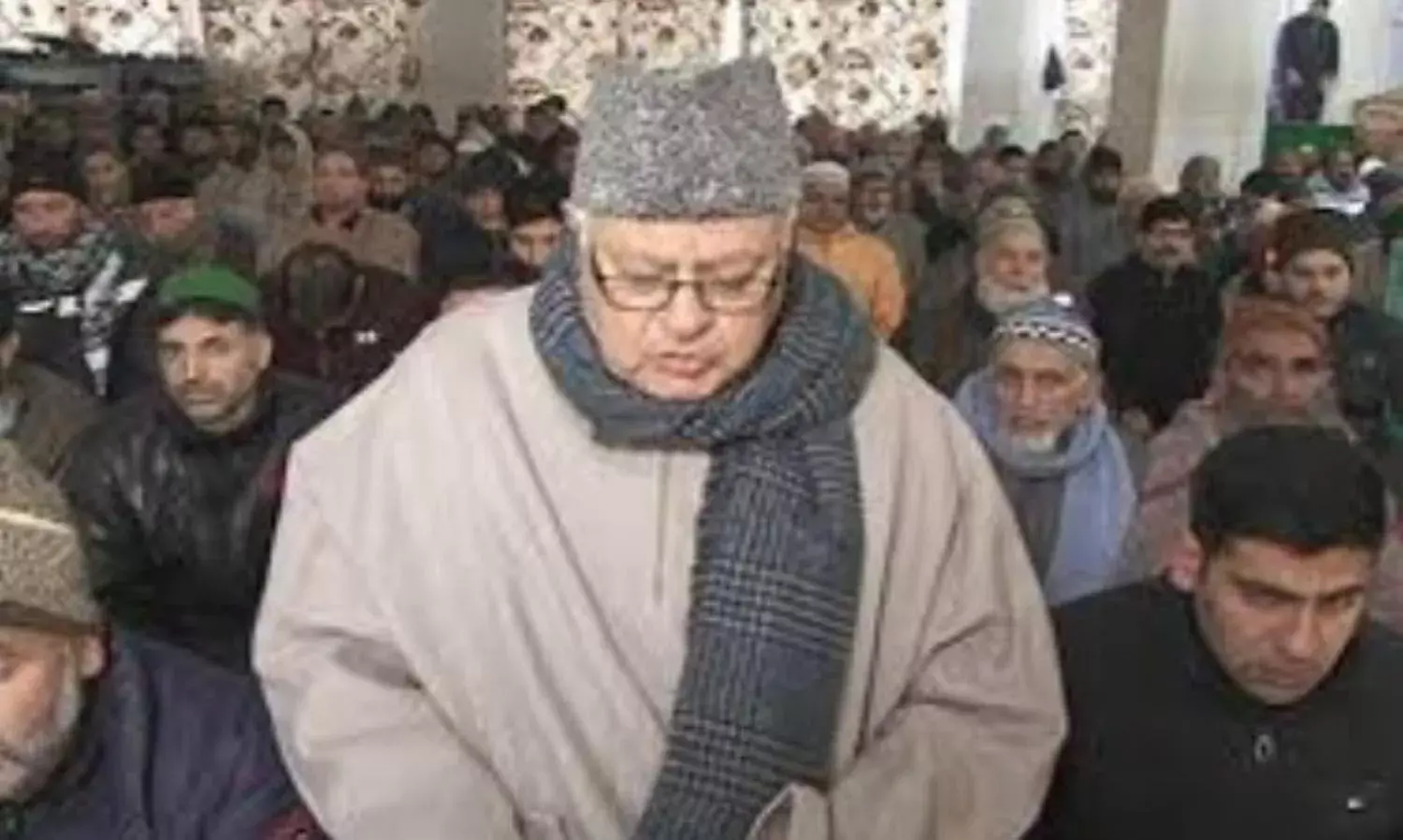Heavy Footfall of Politicians at Charari Sharief Sufi Shrine
#TCVotes BJP candidate also visits shrine

CHARARI SHARIEF: National Conference president, Dr Farooq Abdullah, who is seeking reelection from Srinagar Lok Sabha constituency, visited a historic Sufi shrine in central Kashmir today to seek blessings a day ahead of the polling in this constituency.
The former union minister, who was accompanied by senior party leaders, arrived at the shrine at around 1:30 pm and sought blessings of the Sufi saint for winning what is perhaps his last parliamentary election from Srinagar.
Polling is going to be held in the constituency tomorrow.
Eyewitnesses said as Abdullah walked into the shrine, a khadim (helper) guided him towards the main gate of the sanctum sanctorum. The helper then started reciting some Quranic verses before invoking the blessings of the Sufi saint.
“Doctor saheb is an ardent follower of Alamdar-e-Kashmir. Whenever there is an important occasion, be it personal or political, he makes it a point to visit here and pay respects to the saint,” Ghulam Nabi, a National Conference worker who was accompanying the NC president, said.
At the end of the prayer session at the shrine, a makeshift white turban was worn on Dr Abdullah’s head (the tradition is known as dastaarbandi). The NC president then walked out and left the place without speaking with media.
“It (dastaarbandi) has been a tradition here for ages. They (politicians) come here to seek blessings of this saint when elections are round the corner. But as soon as they come to power, they get busy with their lives and forget the saint,” a middle-aged employee of the shrine, told The Citizen.
Since the dates of Lok Sabha elections were announced, the shrine of Sheikh Noor-ud-Din Noorani (MABH), popularly known as Alamdar-e-Kashmir, has been recording a heavy footfall of prominent mainstream leaders and workers from almost every political party.
Located in the scenic Chrari Sharief town, the 600-year-old shrine, where the mortal remains of the Sufi saint who is revered by Muslims and non-Muslims alike, and his disciples are buried, was gutted in a devastating fire in 1995.
A year later, Dr Farooq was sworn into power after the first assembly polls that were held following the eruption of armed insurgency.
“Look at the condition of the shrine. It has been 24 years since the fire episode but the shrine is yet to be completed. After winning the (1996) election, Dr Farooq promised to make the shrine a marvel of architecture. But those promises were never fulfilled,” another employee of the shrine said.
Earlier, the BJP’s candidate from Srinagar, Khalid Jehangir, also visited the central Kashmir shrine and a dastaarbandi was performed on him as well. A video of the ceremony had gone viral on social media in which the helper was heard invoking the blessing of the saint to help the BJP candidate in coming to power, drawing much criticism.
“They say the saint has the power to change destinies. I am also trying my luck. I deposited Rs 100 as votive offering on behalf of our candidate. With the saint’s blessing, anything can happen,” Umar Sartaj, a Peoples Conference (PC) worker, said.
The candidate of PC for Srinagar, Irfan Reza Ansari, also visited the shrine last week. He was accompanied by his brother, former PDP leader and a prominent Shia cleric, Imran Reza Ansari.
According to political pundits, the confluence of the Sufi strain of Islam and mainstream politics is embedded in Kashmir’s tradition since the time of Sheikh Abdullah, Dr Farooq’s father, who used to address the faithful from the pulpit of Srinagar’s Hazratbal shrine.
“Religion and politics have been interchangeably used by the Kashmiri politicians regardless of their ideological affiliations. Because the society in Kashmir is largely influenced by Sufi strain of Islam, it helps in creating an emotional appeal among voters as well,” Prof Noor A Baba, who teaches at Central University of Kashmir, said.
Cover Photograph Representational: Farooq Abdullah at Dargah Hazratbal



